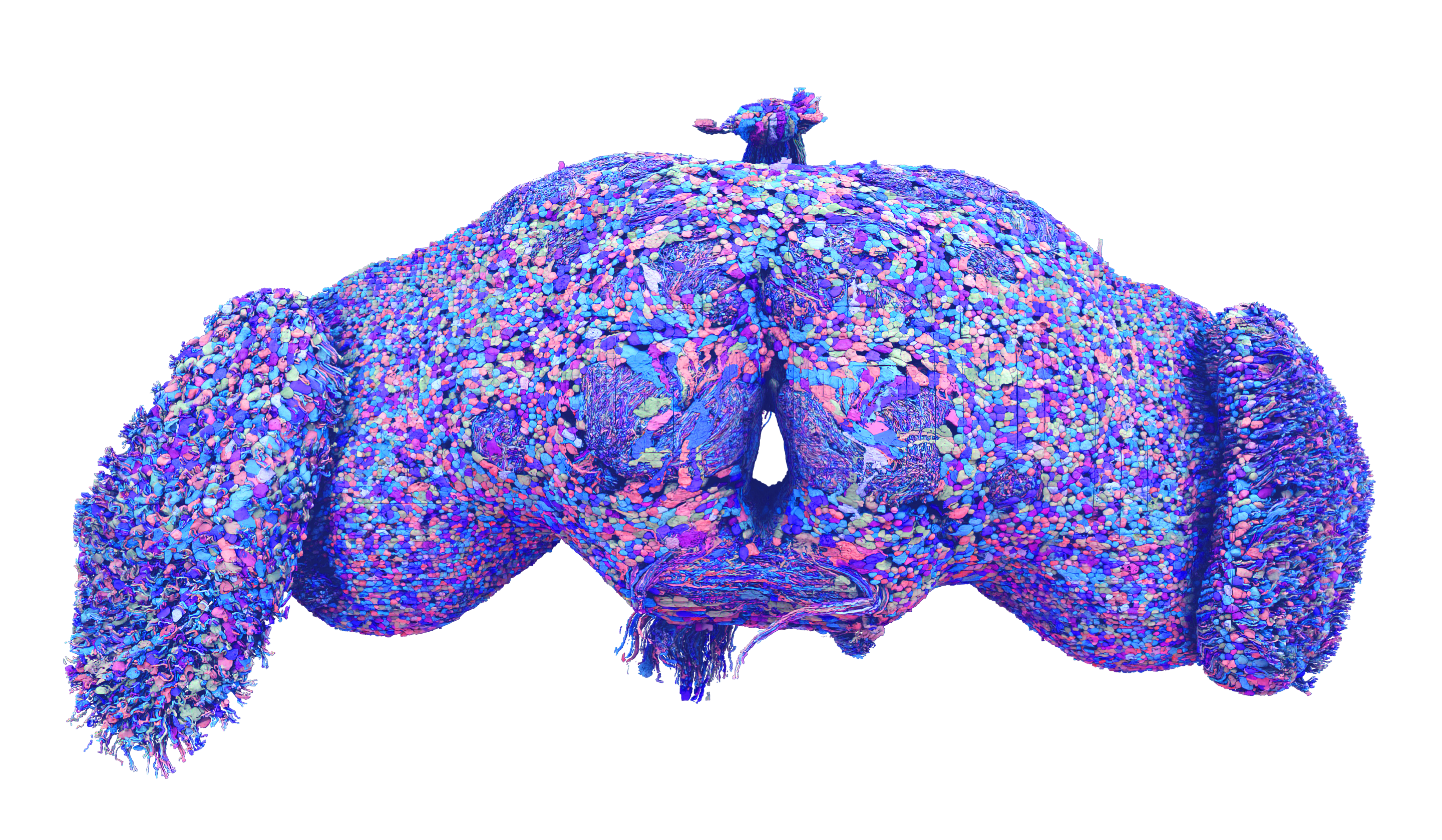Princeton University-led Research Team Makes Major Step in Exploration of Brain
MAPPING THE BRAIN: All 139,255 cells in the brain of an adult fruit fly, as recently delineated by a Princeton University-led research team. Activity within these cells directs everything from sensory perception to decision making to the control of actions, such as flying. There are more than 50 million synaptic connections in this brain. (Tyler Sloan for FlyWire, Princeton University, (Dorkenwald et al., Nature, 2024)
By Donald Gilpin
The mysterious complexities of the brain have baffled humanity for centuries, but a Princeton-led research team has recently made a groundbreaking advancement in the study of brains through its neuron-by-neuron and synapse-by-synapse mapping of the brain of an adult fruit fly.
“This is a major achievement,” said Princeton Neuroscience Institute Director Mala Murthy, as quoted in a Princeton University press release. “There is no other full brain connectome [complete map of the brain] for an adult animal of this complexity.” Murthy, along with Sebastian Seung, a Princeton University professor of neuroscience and computer science, is co-leader of the pioneering research team that represents more than 146 laboratories at 122 institutions.
Seung described this achievement as evidence of how AI can contribute to the advancement of neuroscience. “Mapping the whole brain has been made possible by advances in AI computing. It would have not been possible to reconstruct the entire wiring diagram manually.”
Sven Dorkenwald, a member of the research team who received his Ph.D. at Princeton in 2023 and is now at the University of Washington and the Allen Institute for Brain Science, called the team’s creation “an atlas.”
He explained, “Just like you wouldn’t want to drive to a new place without Google maps, you don’t want to explore the brain without a map. What we have done is build an atlas of the brain, and added annotations for all the businesses, the buildings, the street names. With this, researchers are now equipped to thoughtfully navigate the brain as we try to understand it.”
Dorkenwald led the Princeton University-based FlyWire Consortium, which developed the map and is made up of teams including 287 researchers as well as volunteer gamers from around the world. He was the lead author on the flagship article, one of a series of papers presenting in detail a wiring diagram of the whole fly brain, recently published in the journal Nature.
Earlier researchers had mapped the brain of a small worm, with about 302 neurons, and the brain of a larval fruit fly, with 3,000 neurons, but the brain of an adult fruit fly (Drosophila melanogaster) contains almost 14,000 neurons and about 50 million synapses connecting them.
Understanding the brain of the fruit fly is an important step towards understanding the human brain, which contains about 86 billion neurons, and the diseases that afflict it. Fruit flies, perhaps best known for hovering around over-ripe bananas, share 60 percent of human DNA, and three in four human genetic diseases have a parallel in fruit flies, according to the Princeton University press release.
The map, a high resolution digital photo of a female fruit fly’s brain, was constructed from 21 million images taken by a team of scientists led by Davi Bock, then at the Howard Hughes Medical Institute Janelia Research Campus in Virginia, now at the University of Vermont.
Scientists used the AI model built by researchers and software engineers working with Seung at Princeton to turn those images into a labeled, 3D map, which they made available to the scientific community from the beginning of their work.
“This extraordinary accomplishment is the result of a massive, interdisciplinary team effort,” said Murthy. “We brought together Drosophila neuroscientists with crowdsourced gamers and BRAIN Initiative funds and the ingenuity of our people here at Princeton.” The University’s endowment supported the efforts through its Bezos Center for Neural Circuit Dynamics and the McDonnell Center for Systems Neuroscience.
Murthy further emphasized the vast scope of the collaborative enterprise at Princeton and around the world. “At Princeton alone, we’ve had many postdocs and students working together with software engineers and full-time proofreaders,” she added.
John Ngai, director of the U.S. National Institutes of Health’s BRAIN Initiative, which provided partial funding for the FlyWire project, underscored the importance and future possibilities of this breakthrough. “In many respects, it (the brain) is more powerful than any human-made computer, yet for the most part we still do not understand its underlying logic,” he said. “Without a detailed understanding of how neurons connect with one another, we won’t have a basic understanding of what goes right in a healthy brain or what goes wrong in disease.”
Dorkenwald is optimistic that with this new brain “atlas,” scientists can now “close the loop on which neurons relate to which behaviors.” He added, “It’s wonderful, because new experiments will prompt new hypotheses, and we can relate things to the whole connectome. I think the hard work is ahead. This is a beginning, not the end of the work.”


